
Press release
German Foreign Office and Neue Galerie Berlin will present Shahidul Alam at Deutsche Welle?s Global Media Forum and at the Global Forum on Migration and Development in Berlin.
With the book publication and the exhibition ?The best years of my life. Bangladeshi Migrants in Malaysia? the international well-known photographer and activist Shahidul Alam will be present on Monday, June 19, 2017 through the Neue Galerie Berlin and with the support of the German Foreign Office on the Global Media Forum of the Deutsche Welle. After the end of the forum in Bonn, the exhibition will be on display at the German Foreign Office in Berlin from Thursday, June 23, 2017, and will be part of the Global Forum on Migration and Development from 28 to 30 June. The Finissage will be published on 30 June 2017 at the Federal Foreign Office with a greeting from the State Secretary Dr. Markus Ederer within the framework of the GFMD. The artist will be present in Bonn and Berlin and will be available for questions and interviews. Further information on the exhibition and the artist in the appendix.
As an additional digital component, the Neue Galerie Berlin, together with the technology partner snap2live, presents the newly developed image recognition app ?Neue Galerie Berlin?. All pictures of the Alam exhibition can be scanned with the app (tentatively available on Android). Behind the pictures
About
In 2016 Tanja von Unger founded the Neue Galerie Berlin (www.neuegalerieberlin.de).
To provide a relevant platform beyond photography the businessmodel
also collaborates with publishing groups and institutions and is known for its groundbreaking presentation of photographers and their works at economic conferences and events such as the Economic Summit of the Su?ddeutsche Zeitung, Falling Walls Conference, Rheingauer Economic Forum, Global Solutions G 20 Conference of the Dieter von Holtzbrinck publishers.
Snap2Life create apps for companies in the media, publishing, automotive, business, sports and advertising sectors. Most of these apps are equipped with our innovative image recognition functionality, which we also provide as an API for integration into other apps. In a fraction of seconds we connect the offline world with any kind of relevant content from the online world.
The Deutsche Welle Global Media Forum (GMF) is the Place Made for Minds, where decision makers and influencers from all over the world come together. It?s the global platform put on by Deutsche Welle and its partners and the place where you can connect and strengthen relations with over 2,000 inspiring representatives from the fields of journalism, digital media, politics, culture, business, development, academia and civil society. The conference provides a unique opportunity to network, get inspired and collaborate using a wide variety of state-of-the-art formats.
http://www.dw.com/en/global-media-forum/global-media-forum/s-101219
?Towards a Global Social Contract on Migration and Development?
Tenth Global Forum on Migration and Development Summit 28 to 30 June 2017, Berlin
Germany and Morocco have assumed the co-chairmanship of the Global Forum on Migration and Development (GFMD) from 1 January 2017 until 31 December 2018. During this two-year period, the focus will be on the contribution of the GFMD to the United Nations? Global Compact on Migration. The Compact is intended to constitute a strong signal of the international community for an enhanced global migration policy, to be adopted by the community of states in 2018.
https://gfmd.org
Tag: Migration
The Story of a Starfish Thrower

I have always held a strong sense of right and wrong.?I have always wanted to help people.
Someone asked me recently why, and I responded that this was as much a part of me as the color of my eyes.
Then I realized that these innate characteristics were likely multiplied during defining moments in my own life when I wished for someone to help me.
I was the kid who found baby birds on the ground and took them home to live in our hot water cupboard.?I would enlist my friends? help to find bugs in the garden that we would mash up and painstakingly feed to the ?patient? with tiny pipettes. More often than not, the baby birds didn?t survive, which bought floods of tears.
Sometimes they did, though, and for every feathered life saved, the angst was worth it.? Continue reading “The Story of a Starfish Thrower”
What Joy Bangla means today
Originally published in New Age
By Shahidul Alam
Joy Bangla in those days had not been commandeered by any political party. It was a slogan we all used. Some took it more to heart than others. I was on a rickshaw heading towards mejo chachi’s house, (she is mother of my footballer cousin Kazi Salahuddin, better known by his nickname Turjo). Seeing a friend on the road I shouted out Joy Bangla. Joy Bangla, he waved back. At mejo chachi’s the rickshawala refused to take my fare. “Joy Bangla bolsen na. apnar thon bhara loi kemne” (You said Joy Bangla. How can I take fare from you?). Despite my insistence he wouldn’t budge. The rallying cry belonged to us all. He saw me as a fellow warrior.
On the 16th December, I had gone into a burning military convoy opposite Sakura hotel and took a partially charred Browning light machine gun as a trophy. Almost at the same site where I had seen, nine months ago, people being gunned down as they ran from the flames on the night of the 25th March. They lived in the slums near the Holiday office. Their brutal death part of a statistical count we still argue about.
Years later, I tried to put together a visual chronicle of the war. Collecting photographs from great photographers from far away lands and many local ones who had witnessed our pain, and shared our victory. There were moments of great bravery and greater sacrifice. There were moments of immense pain. The weight of great loss. Rashid Talukder’s image of the dismembered head in Rayerbazar was one of the most striking. Kishor Parekh?s sculpted frames showing, dignity, honour, elation and loss. Raghu Rai?s monumental images of seas of people seeking shelter. Captain Beg’s rare photographs of the mukti bahini during battle. Mohammad Shafi?s striking image of women smuggling grenades in half-submerged baskets. Aftab Ahmed’s image of the final surrender, stoic and significant.
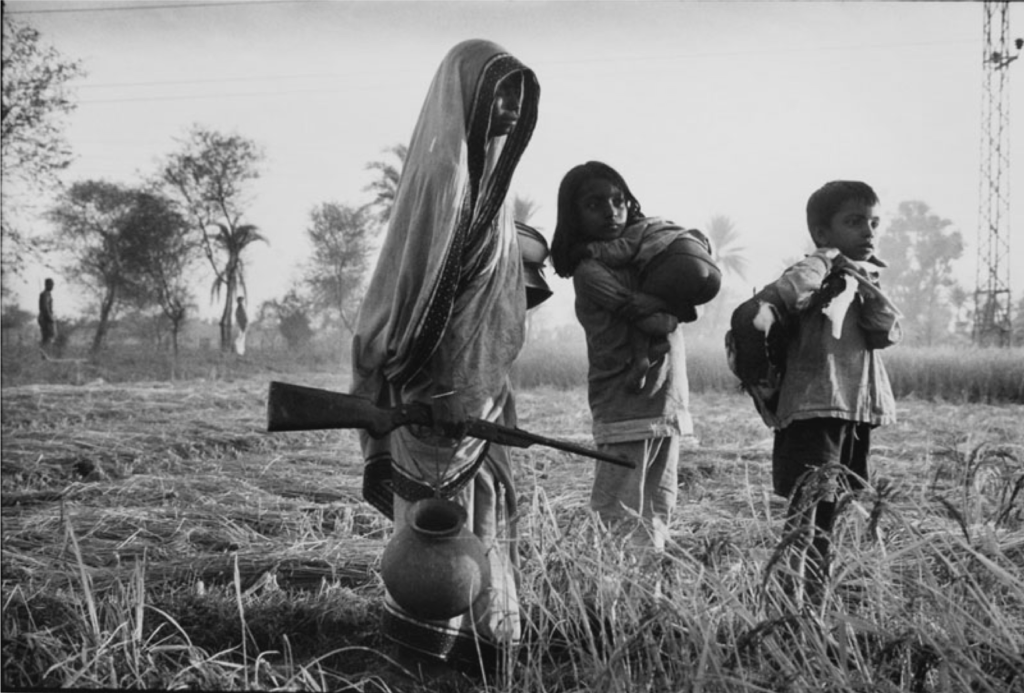
The image that stood out from all the others however, was by Penny Tweedie. Freelancing and without an assignment, Penny had neither the luxury of a client?s budget, nor the assurance of a publishing slot. She did the best she could, getting lifts from fellow photographers, flitting between areas of conflict and stress, she stayed close to ordinary people. People like my rickshawala friend, or the people I saw dying on the night of the 25th March. People who resisted, people who fled, people who sheltered others. People who fed people when they had little food themselves. The image of a woman, carrying a gun walking through a paddy field, with children in tow, was for me the image that encapsulated the war. These were ordinary people who had war thrust upon them. They made do, as best as they could. Bearing their pain with dignity. Fighting with no hope for return. Unlike me, they were not trophy hunters. I doubt if that woman ever made it to a muktijoddha list. I have no way of knowing if she, or her children made it through the war alive. They gave us this nation where we had all hoped we would be free. Continue reading “What Joy Bangla means today”
THE DREAM BOAT
 A boatload of refugees making the 200-mile journey to Christmas Island.
A boatload of refugees making the 200-mile journey to Christmas Island.
THE DREAM BOAT
By LUKE MOGELSONMore than a thousand refugees have died trying to reach Christmas Island. But faced with unbearable conditions at home, they keep coming.Photographs by
JOEL VAN HOUDT
BY LUKE MOGELSON
PHOTOGRAPHS BY JOEL VAN HOUDT
November 15, 2013
It?s about a two-and-a-half-hour drive, normally, from Indonesia?s capital city, Jakarta, to the southern coast of Java. In one of the many trucks that make the trip each month, loaded with asylum seekers from the Middle East and Central Asia, it takes a little longer. From the bed of the truck, the view is limited to a night sky punctuated by fleeting glimpses of high-rise buildings, overpasses, traffic signs and tollbooths. It is difficult to make out, among the human cargo, much more than the vague shapes of bodies, the floating tips of cigarettes. When you pass beneath a street lamp, though, or an illuminated billboard, the faces thrown into relief are all alive with expectation. Eventually, the urban pulse subsides; the commotion of the freeway fades. The drooping wires give way to darkly looming palms. You begin to notice birds, and you can smell the sea. Continue reading “THE DREAM BOAT”
Bengali Harlem and the Lost Histories of South Asian America
The stories of these early working-class migrants vividly contrast with our typical understanding of immigration.?Vivek Bald?s meticulous reconstruction reveals a lost history of South Asian sojourning and life-making in the United States. At a time when Asian immigrants were vilified and criminalized, Bengali Muslims quietly became part of some of America?s most iconic neighborhoods of color, from Trem? in New Orleans to Detroit?s Black Bottom, from West Baltimore to Harlem. Many started families with Creole, Puerto Rican, and African American women.
As steel and auto workers in the Midwest, as traders in the South, and as halal hot dog vendors on 125th Street, these immigrants created lives as remarkable as they are unknown. Their stories of ingenuity and intermixture challenge assumptions about assimilation and reveal cross-racial affinities beneath the surface of early twentieth-century America.
Bangladesh in the Brazilian Amazon
By Gabriel Elizondo in Americas
Aljazeera
Wed, 2012-01-11 03:55.
In the northwest Brazilian Amazon town of Brasileia, population 20,238, there are almost 1,200 Haitians.
They often mill around during the day, clustered in groups in the shade trying to keep cool from the steamy heat, waiting for weeks for their work documents to be processed so they can get a job in another part of Brazil.
But on Tuesday it was the two other guys sitting alone who caught my attention. They could have been Bolivian perhaps, or even Brazilian. But I knew they weren?t.
?We are from Bangladesh,? AHM Sultan Ahmed, 36, tells me with a smile when I approach and ask to talk with them.
His friend, Abdul Awal, and my photojournalist, Maria Elena Romero, and I, all sit together on the grass and begin to chat.
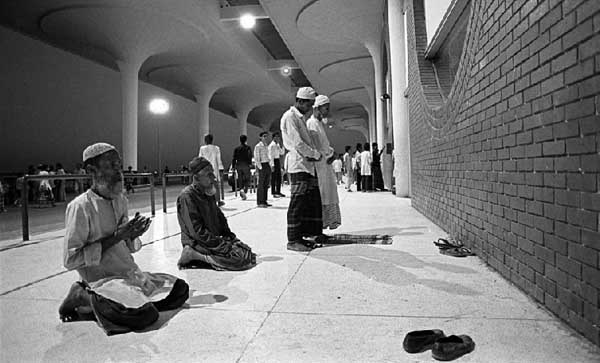
They are from Dhaka, and arrived in Brasileia the night before. They slept on the ground in the main plaza, having nowhere else to go. For obvious reasons, they look tired, but still muster the energy to smile wide and often.
Why did you come to Brazil?
?I heard Brazil?s economy is growing, and that here is good for us and good jobs,? Ahmed says. ?Soon we can hopefully get our papers and find a job. I am happy?
?I think there is a lot of work in South America now, and a lot of people from my country are wanting to come here now,? he continues.
Neither has been to Brazil before, nor speak a word of Portuguese.
Continue reading “Bangladesh in the Brazilian Amazon”
Aid and influence
Subscribe to ShahidulNews

Surge in Global Migration Expands Scale of an Aid Group?s Influence
Words By Jason DeParle
Photographs by Shahidul Alam
Published: New York Times August 30, 2011
DHAKA, Bangladesh ? As global migration has rapidly expanded, so has the influence of a little-known group whose eclectic work shapes migrants? lives across six continents.
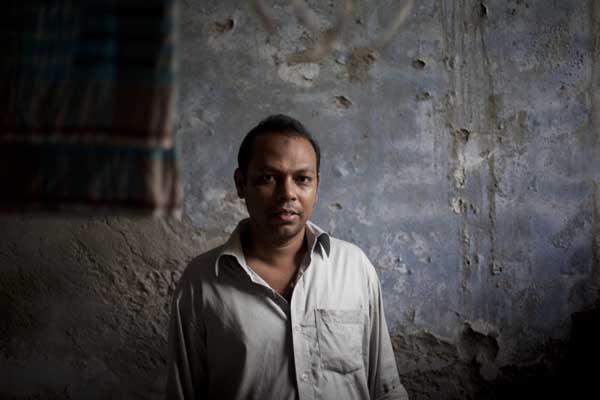

Part research group, part handyman crew, the International Organization for Migration has become the who-you-gonna-call outfit for 132 member countries grappling with the surge in migration, both legal and unauthorized. Its rapid growth is a sign that migration has outgrown most countries? ability to manage on their own. ?I haven?t made it to a country yet where migration hasn?t been high on the list of priorities,? said William L. Swing, the director general.
Yet even as its duties grow, the group operates under tight constraints that reflect the special worries migration can arouse. The United States and other rich donors largely dictate its agenda and ensure that it does not erode their power to decide which migrants they admit and how many.
?It helps them bring in the people they want and keep out the people they don?t,? said Joseph Chamie, a researcher at the Center for Migration Studies in New York.
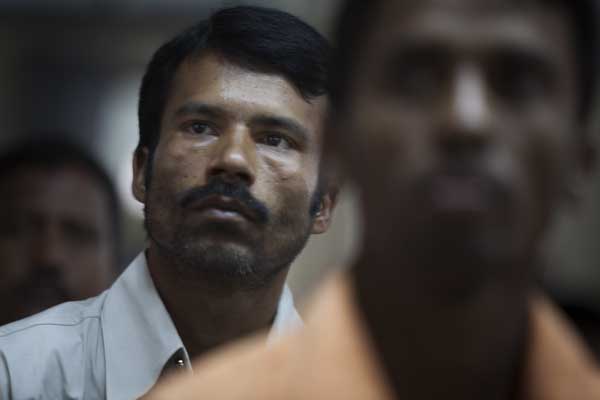
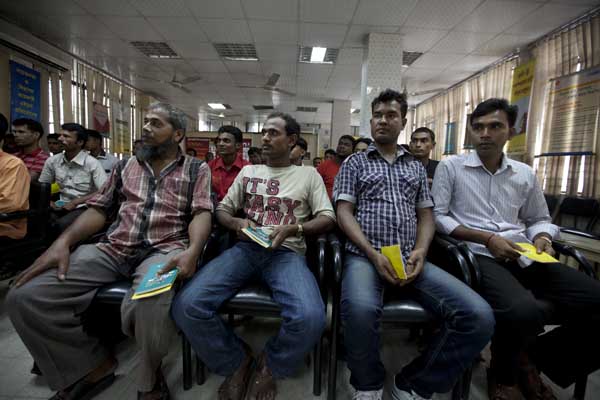
To understand the group?s rapid growth and varied duties, consider Bangladesh, where the $10 billion that migrants send home accounts for 13 percent of the economy ? making the export of people nearly as vital as the export of shirts. But migrants borrow heavily to finance their trips, and the labor recruiting industry is rife with scams.
Continue reading “Aid and influence”
Beri Bandh 2: Sadek City Model Town
Subscribe to ShahidulNews
![]()
The accident had changed things, and rather than see it as an impediment, I decided to make it a feature of my work. So on the 2nd Monday having been to the hospital for my regular physiotherapy, I revisited the scene. Walking down the narrow alleyways in between the line rooms in Sadek City Model Town (I have no idea who Sadek is), I met up with some women and two girls (around 8-10). They wanted pictures taken, and wanted to art direct the photos. So I was rapidly being given instructions, which changed as every new person joined what had become a rapidly growing crowd.
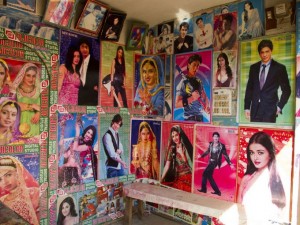
The act of taking pictures wasn?t so easy. With my right hand having low mobility, I had only taken my compact, and was taking pictures with my left hand. That?s when you realise that cameras are not designed for left handed people. Still, with a small camera you can improvise. Soon they decided they needed prints, so the two girls dragged me down to the local studio. It was a longish walk and I had wanted to stop several times to take pictures, but only managed a few times. The two girls were tough task masters. The guy in the studio was asleep, and a bit grumpy for being woken up. But he didn?t make prints himself. He would gather the images and send it off to a nearby lab, so we returned empty handed. I promised I?d bring prints back the following Monday.
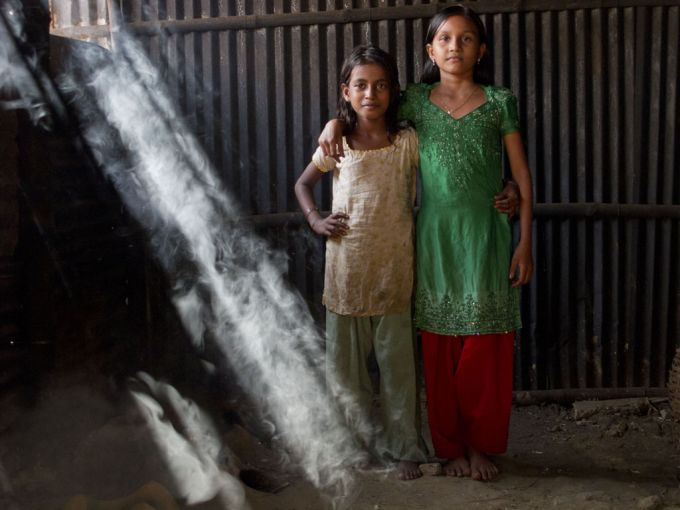
I was then taken round and introduced to the other families, and eventually, they found a kitchen where they could pose as they wanted. The girl cooking was even younger than them, and the two art directors quickly took control. The shaft of light and the smoke were just lucky ingredients. Slowly the residents of Sadek City Model Town opened up to me. Some were still suspicious. Was I going to report to the government? Would this result in another eviction? What was I going to do with these pictures? But soon we were friends. A little baby that came to me, refused to go back to her mother. I was now a family member! The houses (8 foot by 8 foot rooms) cost 1100 Taka a month to rent. Per square foot, that was almost twice as expensive as our flat in Dhanmondi! And that was excluding gas. They spent 30 Taka a day on firewood, so it effectively cost 2000 Taka per month (about 20 Euros) a month for that one room. They did have electricity (sometimes), and there was a nearby tubewell where they could bathe and draw water from. The common loos did have long queues, but were considered adequate. This was a transit point they explained to me. The place where people stayed when they first came to the city. Once they found better work, they would move on. To brick houses, with piped gas. The tin roofs meant the rooms were like ovens in the summer and a freezer in winter.
There were two storied houses too. The upper floor had a thin concrete floor, to ensure the floor didn?t leak. I was surprised that a bamboo walled structure could have a concrete floor, but it seemed to work. Narrow wooden stairs led to the upper floor. It was a tinder box anyway and with these narrow exits, there would be no escaping if there was a fire.
They had arrived from all over the country, though many were from Barisal, a coastal region in the South. The men would ride rickshaw vans or work as day labourers upon arrival. ?All you needed was a basket and a spade. If you worked flat out from 8 in the morning to sunset, you could earn 200 Taka (about two Euros) a day. You wouldn?t get work every day, but enough days in a month to pay for the rent and food.?
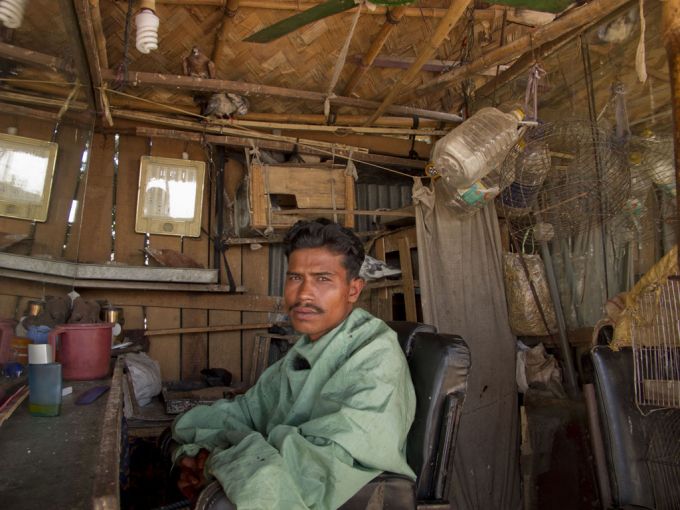
On the way back, I came across the barber shop. One of many I?d seen that day. It didn?t look too interesting at first, until I saw the pigeons flying. They were flying, eating, shitting, without the slightest trace of concern, or fear. This was obviously their home, and the clients who came in to barber were the intruders. The barber had gone off leaving the client in the chair, and the pigeons were just getting on with their lives. The barber?s younger brother was there and explained that earlier there were more birds, including parrots. But it had become too much of a hassle, so now the barber only kept pigeons.
I had started later than I had hoped, and being a bright sunny day, I was in the glaring sun much of the time. I had to be careful with my framing in this very hard light. So I did most of my work indoors, or in the narrow corridors where the was little direct sunlight. Ideally I would have waited for the lovely afternoon light that accompanies winter, but my pains were beginning to take toll.
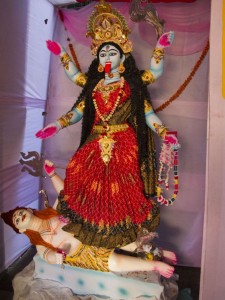
As I headed back I went through Rayerbazaar, and the people I had photographed last week all flocked. I managed to avoid tea, but was given a cup of fresh cow?s milk. One doesn?t usually get fresh milk these days, so this was a treat. The conversation veered to the local mafia and what some of the locals were getting up to. I left promising to bring back some prints next Monday. I realized, I would need to make a LOT of prints for that day. I then came up with the sugar cane juice man from last week and he squeezed two special glasses for me. As I was buying some water chestnuts, a guy passing by, told me of the Kali (Hindu Goddess) puja that was taking place nearby. I followed the directions to a narrow alleyway, where the Goddess was in all her splendour in a raised platform at the end. The singing, dancing and firecrackers just added to the atmosphere.
beri bandh
Subscribe to ShahidulNews
![]()
Wasn?t sure how it would work out.? But it was an interesting suggestion from Lino. ?Just do what interests you. Take what grabs your eye? she had said.
The embankment in Rayerbazaar was built to protect the big city from the floods.? Communities have grown around it. Mostly? migrant workers in search of work. Many who have lost their homes to the river.
Majeda, our home help. Lives there too. Her husband suggested we meet at the mosque. We agreed to meet on Monday the 1st November, before sunrise. ?You?ve just ruined your prospects? my partner Rahnuma, reminded me. ?There?ll be a whole crowd, and you won?t be able to work. ?
Well it was done. I had just come back from the Long March and hadn?t really slept the last two nights. Cleaning the lenses. Making sure I had enough memory cards. Recharging batteries. Some money for the day. I was set. Went to bed early. The alarm woke me up. But it was pitch dark, and turning it off I dosed off again, waking up in panic a few minutes later. It didn?t matter. It was a cloudy day and the early morning sun I had wanted to catch was nowhere to be seen.
All geared up, I rode my bicycle in search of the mosque, stopping on the way to take the odd photograph. One picture of the sunlight gleaning on a grilled closed gate, was the only sunlit image I had that day.
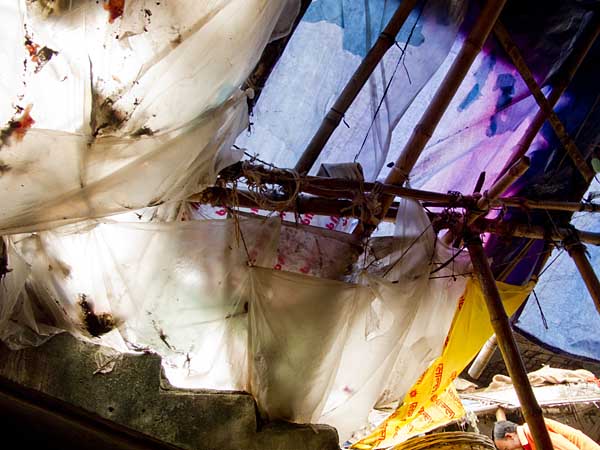
The market place was a delight. People setting up shop, fishmongers arranging their fish in neat shapes. Narrow lanes lit by streaks of light leaking through the tarpaulin slits on the roof were newly swept and glistening. I walked up the stairs to the rooftop, which looked more like an unfinished construction site than a bazaar rooftop.? Only later did I learn that it had been a three storied building which was being torn down, to make room for a multistoried modern marketplace. Most of the shops had moved to nearby buildings, Only the ?kacha bazaar? where perishables were sold, was still operating on the ground floor. There were still a few dress and shoe shops on the edges, waiting to move.
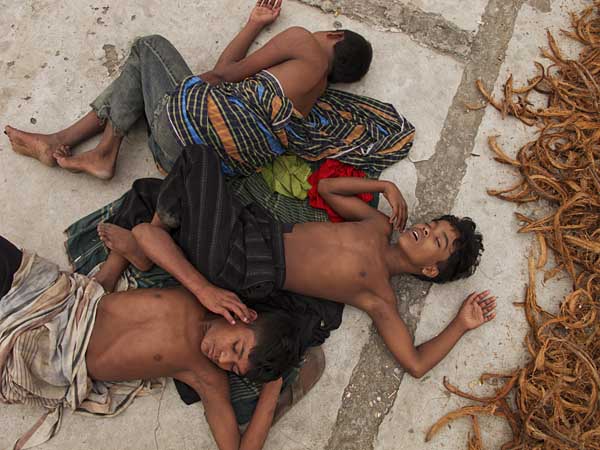
The barren cityscape was worlds away from the bustle below. Three boys slept, huddled together, oblivious to the day having started. Crows perched on the rod ends of the concrete slabs. Gaping holes in the roof showed through the bazaar and the streets underneath. Looking up, many saw me and insisted they be photographed. Others busy with work were oblivious to my presence.
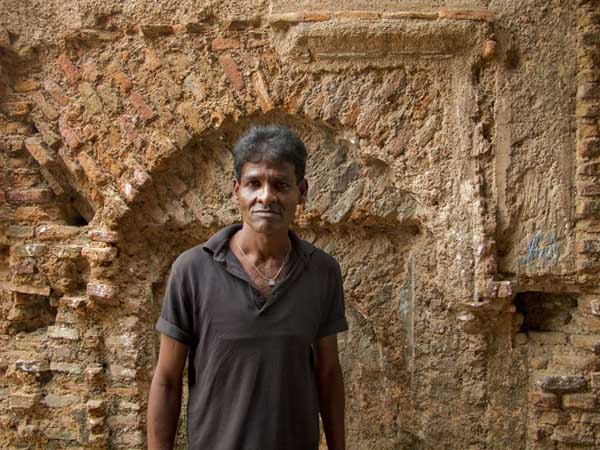
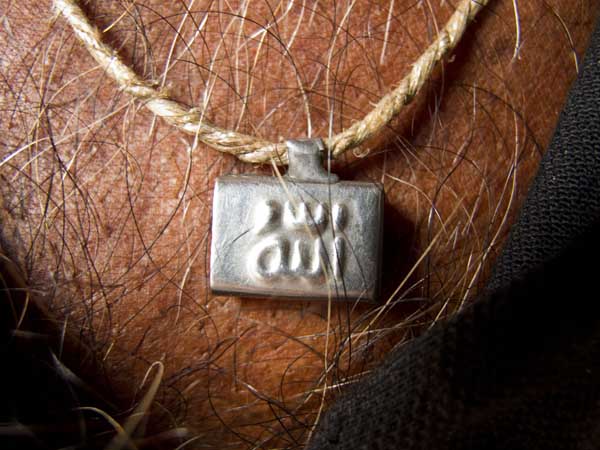
The mandir next to the mosque had small banyan trees clinging to the old decaying bricks. Bulbulis had made their homes in the gaps in the bricks. I mused on what I was doing . On the fact that there was no pressure at all on me ?doing? anything. I was doing what I loved to do. Taking pictures of whatever pleased me. It was the loveliest of combinations. A commissioned personal project. Rare in these days of diminishing opportunities. I decided I didn?t need all this gear, and went back to leave the big DSLRs and long lenses behind. I was going to spend the rest of the day with my compact. Not fully sure of my decision, I took one DSLR body with a wide lens with me. Just in case.
By the time I returned, I was a known face. A shopkeeper brought out his pet mouse and insisted it be photographed. Mice are generally hated by shopkeepers and I was struck by how lovingly he stroked the little animal, which was least interested in the photographer!
I took some interviews of shopkeepers getting their take on why the price of rice had escalated. Then went on to the river nearby. There was no rush, and I stopped on the way at the butchers and the blacksmiths. He complained that many had taken photographs but he?d never been given a print. Giving him a card and promising to return next Monday, I rode ahead. Past the sewage pipes, a funeral procession, an entire rooftop being relocated?
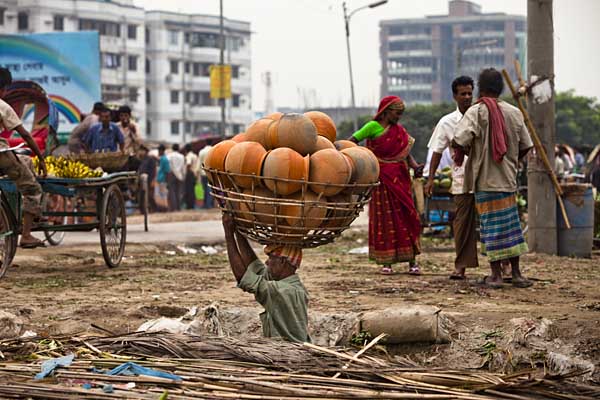
A boat full of pots had berthed and I sat fascinated by the careful precision with which the fragile contents were offloaded, packed and taken pile high through the busy traffic. Then, as I was heading back, a deafening thump. A motorbike running at speed had rammed into me. Dazed on the tarmac, I realized I was badly hurt. The bleeding from the ear didn?t bode well. People came rushing. I had enough sense to ensure no one tried to ?help? me in an overenthusiastic manner. ?jate matal tale thik? (might be drunk, but his rhythm?s OK) I thought. Except for a kid who poked his oily finger on my lens, neither of my cameras had been damaged. I?d instinctively shielded them during my fall!
Putting my mangled bike and my mangled body on a rickshaw. With the help of a passerby, who held on to the bike and me as we weaved our way through the bazaar traffic, I made my way home.
My sister and my brother-in-law, both doctors, came to see me. They wanted me to go to the hospital. I wanted guests to leave so I could get on with my work. Pictures needed to be uploaded. Propping myself on the bed, so the laptop could be perched in a manner that would allow me to type with my good left hand, and my right shoulder, arm and leg be propped so it hurt less, I finally got on to the Net and sent a cryptic message to Lino. Later, when the pain had become more manageable, I sent two images to Lino, asking her to upload for me.
————
Look out for the regular updates in PAPA
Tracing Freedom
Subscribe to ShahidulNews
![]()
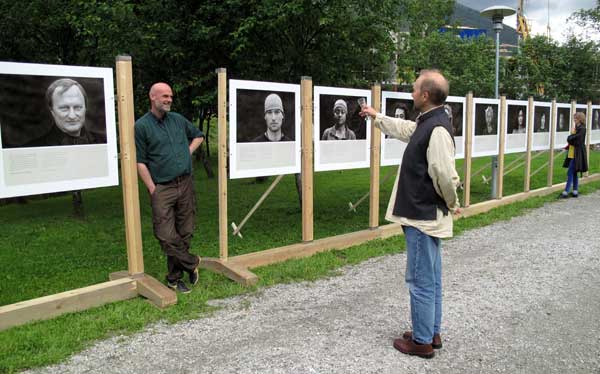
In late 2008 and early 2009 the Norwegian photographer Tom Hatlestad spent four months driving overland between Norway and Bangladesh. Along the way, he asked a hundred people to define freedom. Some of them are featured in this exhibition. Tom began dreaming of making an exhibition of photos and statements on perceptions of freedom after hearing that the theme for the 2009 Chobi Mela international festival of photography in Dhaka would be ?Freedom?.
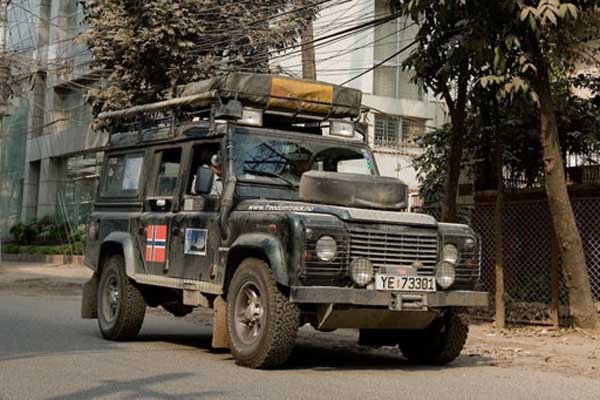
Freedom of movement – Tom has always loved to travel freely, and has visited some 50 countries to date. As a Norwegian citizen, he is also privileged in being able to travel to most places without problems. However, freedom of movement is actually less now than it was 50 years ago, mostly due to international politics and increasing levels of tension. With closed borders in Afghanistan, Syria, Iraq and Burma making the northern and southern routes impassable, Tom drove the only remaining overland route between Norway and Bangladesh: Sweden, Latvia, Lithuania, Poland, Slovakia, Hungary, Romania, Moldova, Bulgaria, Turkey, Iran, Pakistan, Nepal and India.
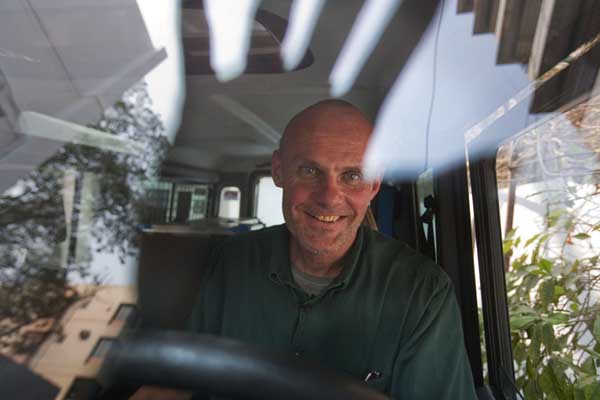
Freedom of thought – Driving ten hours daily for 102 days evokes a type of meditative state and a sense of freedom from domestic concerns. Tom?s Land Rover was not only a rolling studio with its own photo backdrop, but also a canvas for exploring his personal challenges on route. From its safety, he could differentiate real external barriers from those which were mostly in his head.
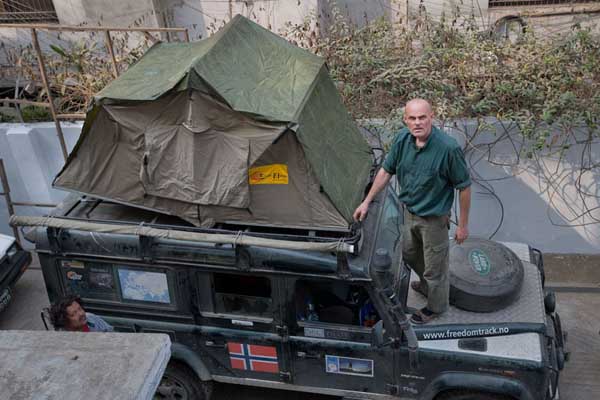
Freedom to congregate – Tom talked to people from around 30 different countries and from all walks of life and social standings. They include the head of the Lithuanian National Opera and Ballet, a world renowned violin maker, a Nobel Peace laureate, authors and activists. But it wasn?t easy to meet people of different ages, genders and nationalities ? in some countries women just aren?t allowed to talk to strangers, in others Tom?s passport was confiscated and he had to follow a military escort.
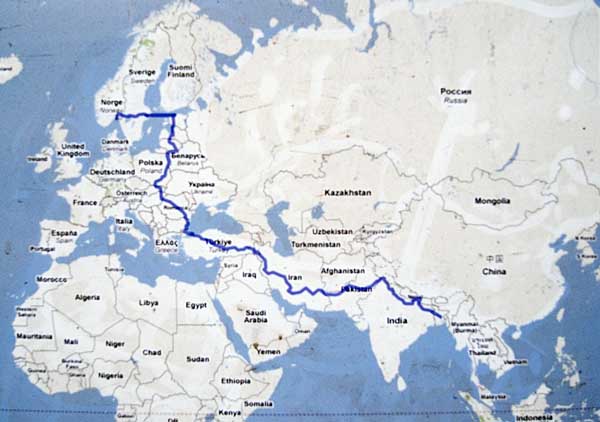
***
Tracing Freedom is a project in cooperation with the Nobel Peace Centre. Tom hopes that these portraits of freedom encourage you to reflect upon the freedom you experience in your own life, country and neighbourhood. Ultimately, he wants Tracing Freedom to help inspire a more open-minded and generous spirit in relation to our acceptance of other people?s attitudes.
***
Tom Hatlestad?s base is in Tj?me, Norway, from where he is currently planning his next Freedom Track journey. Tracing Freedom is supported by H?yanger N?ringsutvikling, Sparebanken Sogn og Fjordane and Fond for Lyd og Bilde.
Scroll down this link to see a description of Tom’s trip to Bangladesh


